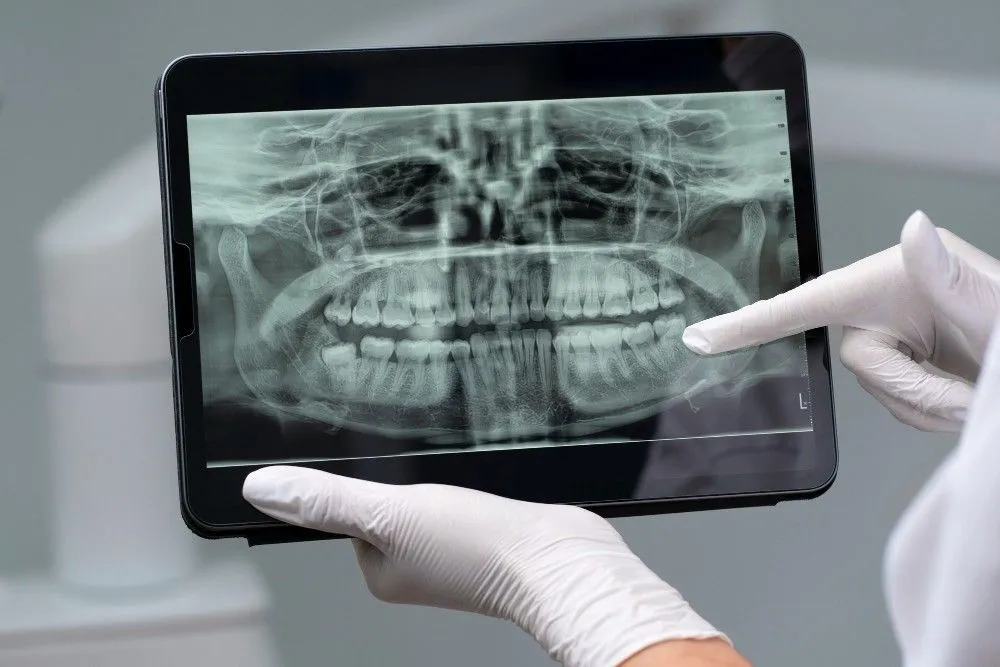Headache is a problem that irritates almost all people whenever they suffer from it. However, several reasons, such as dehydration, eyesight, etc., are possible reasons people get headaches. Nobody can imagine getting a headache because of the jaw. Sometimes, TMJ or the temporomandibular joint can be a reason for headaches. A TMJ headache can affect or disturb your day-to-day life. A TMJ headache is discomfort in the face, cheeks, and head brought on by a TMJ condition. You can consult Dentists, medical professionals, or physiotherapists to diagnose TMJ headaches. Let's read more about it.
What is TMJ?
- TMJ, the temporomandibular joint, plays a role like a hinge that slides and thus connects the jawbone to the skull.
- It is on both sides of the face in front of the ears. It assists the face in doing movements such as speaking and chewing.
- Sometimes there are disorders in the TMJ region. The causes of TMJ include the dislocation of the joint, arthritis, trauma, stress, and excessive teeth grinding.
- The major symptoms of TMJ disorders include jaw pain, earaches, headaches, difficulty opening the mouth, difficulty chewing, etc.
What are the potential Causes of TMJ headaches?
- The exact cause of the TMJ head pain is unknown, but it is speculated that activities like teeth grinding can cause headaches.
- TMJ-related headaches have been reported by 1 out of 10 people. However, there is no specific report about the statistics of TMJ head pain, as it is often difficult to distinguish between TMJ headaches and other general or normal headaches.
- Muscles in the TMJ cover the jaw and the cheeks, and when these muscles cause pain due to fatigue, which also leads to pain in the head, that is, headaches. When the jaw muscles are tensed, the pain spreads to other muscles along the TMJ line, and thus, it causes headaches.
- TMJ headaches can also be related to osteoporosis, osteoarthritis, and joint mobility conditions.
Also, Read How to cure a headache with only food?
What are the Symptoms of TMJ headache?
Headaches are of many different types; the normal ones can arise due to other issues, such as dehydration. The TMJ headache arises due to the causes mentioned above. The symptoms of a TMJ headache are similar to that of normal headaches; however, a few other symptoms are particularly observed while having a TMJ headache. These symptoms include:
- Tightness in the facial and the jaw muscle
- Facial and jaw pain
- Movement of the jaw becomes restricted.
- A cracking noise in the jaw
- Changes in how the mouth's top and bottom parts fit together.
- These headaches feel more like tension headaches, the most common type of headache that causes mild to extreme pain behind the eyes and in the head and neck. It feels as if a tight hairband has been tied around the forehead.
How can I recognize the Difference between TMJ headache and Migraine?
When there is extreme pain in the head, one might think it is a migraine. Migraine is considered a neurological condition that can cause different symptoms. The additional differences between migraine and TMJ headaches include nausea, difficulty in speaking, and light sensitivity. Migraine is diagnosed based on clinical history. The common categories of Migraine include chronic versus acute, also called episodically. The causes of Migraine have not yet been defined clearly, but certain factors like bright lights, heat, dehydration, and loud music and sound trigger Migraine. TMJ headaches occur because of the problems associated with the TMJ hinge.
Also, Read Sinus Headache Relief Pressure Points.
How to diagnose the TMJ headache?
TMJ headache occurs due to TMJ dysfunction or any related disorders. And hence to diagnose a TMJ headache, the dysfunction is studied by a dental checkup. The doctor studies the range of motion of the mouth when it is open and closed. Study the jaw joints as one opens and closes the mouth. In addition to these tests, X-rays or radiographs can be taken to look at the joints of the jaw and to determine to what extent the damage has occurred. The types of radiographs include:
- CBCT scans - The scan is also called cone beam computed tomography (CBCT), which gathers hundreds of pictures of the teeth, jaw, and bones in the face and sinuses. These images are then joined together to obtain a three-dimensional image.
- MRI scans - These scans are used to view the tissues around the joints of the jaws. MRI images help determine the disk's position and any possible inflammation and locking of the jaw. MRI scans can help determine if the TMJ disc is properly functioning and if it's in good condition.
- Panoramic radiographs - These are dental x-rays that show an overview of the teeth, TMJ, and jawbone.
- TMJ arthroscopy - This is a technique that is used in determining TMJ disorder. In this method, the doctor inserts a cannula, which is a small tube, into the space between the joints, and a camera is inserted into the space to supervise the area and diagnose whatever is observed.
Also, Read Suffering from Headache (Shirashul) - Ayurvedic Treatment.
What are the available Treatment options for TMJ headaches?
Most TMJ disorders, including TMJ headaches, require a reliable and safe plan for their treatment; therefore, traditional and conservative treatment methods are recommended. Some treatment methods include the following
1. Lifestyle changes -
Changes in the behaviors associated with the jaws are helpful, which include the avoidance of extra chewy and hard foods, reducing the amount of stress in life, which leads to behaviors like clenching of jaws and avoiding the movements of the jaw like the ones that happen during yawning and chewing gum or any other chewy substance. To manage the pain caused by the TMJ headache, NSAIDs, nonsteroidal anti-inflammatory drugs, can be used to control and reduce headache and jaw pain. Examples of NSAIDs include Aspirin, Ibuprofen, etc. Practicing exercises that help move the jaws helps relax the muscles and relieve the symptoms.
2. Surgical treatments for TMJ headache -
If lifestyle changes cannot make the symptoms go away, then perhaps the other way is by having permanent treatments, including surgery. These treatments include the orthodontic process, which permanently changes the mouth's structure and other parts of the mouth, which helps reduce symptoms. These treatments have not proven to be effective.
3. Other methods for TMJ headache pain relief -
TMJ headache occurs due to disorders in the TMJ area; several exercises help relieve the headache by exercising the jaw muscles. They help by strengthening the jaw muscles, stretching, and increasing the mobility of the jaws.
Also Read: How To Cure TMJ Permanently?
Conclusion -
TMJ, the temporomandibular joint, is involved in the jaw's movement and mobility and speech and chewing activities. When there is tension or dislocation of the TMJ, it causes a lot of symptoms, including headaches. It is referred to as a TMJ headache, accompanied by jaw pain and immobility. It is diagnosed using X-rays and MRIs and based on the severity of the condition, the doctor prescribes various treatment methods.

Reviewed by







